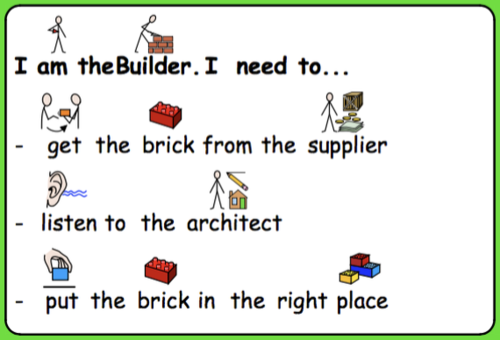By Natasha
Those familiar little bricks are being put to extraordinary use.
Originally developed by Daniel B. LeGoff (a neuropsychologist), who saw the mighty potential of this humble brick, Lego® Therapy has grown into a motivational practice used by speech and language therapists, teaching staff and parents alike.
It is believed that the name Lego® was adapted from the Danish phrase for ‘play well’. Certainly for many children, the ability to play and interact within social settings seems perfectly natural: it is a skill we often take for granted. Although, there are also children who find the strategies needed for peer interaction less accessible. Intimidating, even.
How can a child learn to socialize in a safe and supportive environment?
Our method: Lego® Therapy!
At Magic Words, we use this play-based approach to facilitate children toward ''communicative competence'' (Ralph and Rochester, 2016), depending on their individualised targets. Whilst some might need to work on maintaining eye contact and attention, others might attend the group to aid understanding of prepositions, problem-solving or sequencing.
The aim of the game is, of course, to build a Lego model. This can be a simplistic or as complicated as you need it to be, according to ability and attention span of the group. The roles that we use are:
Builder: constructs the model, listens to the architect
Supplier: selects the bricks at each stage, listens to the architect
Architect: holds the instructions, describes the bricks to the supplier, instructs the builder where to put them
Facilitator: identifies problems and supports the group with solution
If you have limited numbers you do not have to include every role. Pick them according to the child's targets. For example, if the child struggles with listening you may wish to encourage them by letting them be the builder; they have the motivational reward of receiving a brick and putting it in place. Alternatively, if you have a child who needs to practice describing and ordering key words, the architect role would be an option.
In addition to the jobs, we establish a set of lego-rules to encourage 'model' behaviour. Depending on the age of the group, this could be a clear-cut as good sitting, good looking, good listening, and good talking. Lego® points can be rewarded to acknowledge their participation.
Once the adult has explained each rule and role, they must aim to 'gradually step back and allow the participants to work out social solutions more independently as the intervention progresses' (Ralph and Rochester, 2016). It is hoped that at some point each child will become their own facilitator and navigate social interactions with the same skill they require to build a collaborative model.
One parent, whose child attended Lego® Therapy sessions at Magic Words, explained how her child began to generalise his new awareness:
“He has understood what good listening is for the first time. He now understands why we need to listen and what we need to do to listen well. This has really helped him access small group activities and to concentrate. His eye contact which was a major problem area for him has also improved as a result of understanding that looking is important as it helps people know you are talking to them. He has thoroughly enjoyed the activities and it has also increased his interest in Lego which he is playing with much more outside the group. I think it has also improved his social skills generally...”
With the motivation of Lego® and the naturalistic setting of a play-based task, this child was able to access a level of social interaction, that he had previously not understood the benefits of.
It has certainly become apparent that this therapy is versatile and accessible approach for those with social, communication and language difficulties. Carolyn Green and Elen Bekker, two of our very own therapists, remarked in their article 'Building Lego, building language': 'Several parents expressed that Lego Therapy offered intervention where the alternative would have been to not access sessions at all' (Bulletin, November 2016).
Consequently, what does Lego® mean to the therapists at Magic Words?
Lego® Therapy is a impressively straightforward and structured approach that allows for a great variety of skills to be modelled, practiced and repeated. It allows a therapist, teacher, teaching assistant or parent to incorporate a diverse range of targets under the guise of play. It allows the children who participate to have fun, to collaborate, to build their skill set brick by brick.
To learn more about Lego® Therapy, please contact us.
*Re-edited blog post





